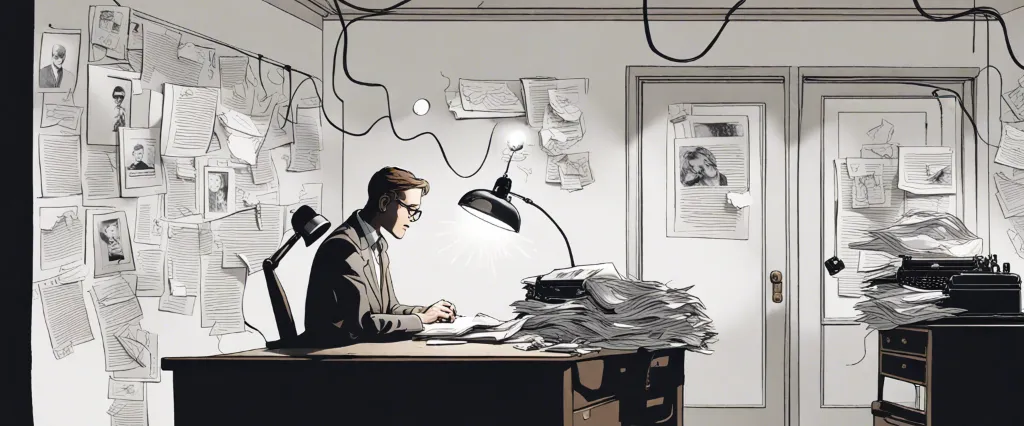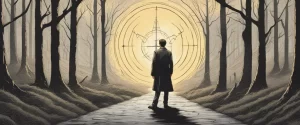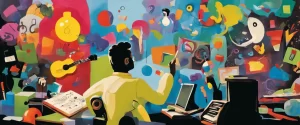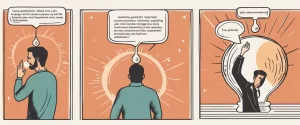——The Art of Dramatic Writing by Lajos Egri & Pictures at a Revolution by Mark Harris

In the realm of literature, both fiction and non-fiction, books have the incredible power to captivate us, transport us to different worlds, and provoke thought-provoking discussions. Two such books, The Art of Dramatic Writing by Lajos Egri and Pictures at a Revolution by Mark Harris, delve into seemingly disparate realms within the vast spectrum of storytelling. While Egri’s work unravels the intricacies of dramatic writing and its profound impact on the stage, Harris takes us on a riveting journey through the revolutionary changes that occurred within the American film industry during the 1960s.
On the surface, these two books may appear to have little in common. However, upon closer examination, a remarkable parallel emerges – both explore the complexities of storytelling and shed light on the creative processes behind it. Egri expertly dissects the essential elements of compelling drama, laying bare the universal principles that underpin all forms of storytelling. Meanwhile, Harris meticulously investigates the cultural and artistic shifts that transformed the landscape of American cinema, spotlighting the revolutionary narratives that challenged traditional storytelling conventions.
The Art of Dramatic Writing serves as a guiding light for aspiring playwrights and novelists, offering a comprehensive framework for constructing compelling characters, engaging plots, and profound themes. Egri contends that a well-crafted story is built upon a solid foundation and systematically unravels the importance of premise, character development, and conflict. Through a series of insightful examples, the book delves into the depths of human nature, analyzing the psychological motivations that drive human behavior and shape narrative arcs. Egri’s work empowers storytellers to understand the complexities of the human condition, enabling them to craft narratives that resonate with audiences on a deeply emotional level.
In stark contrast, Pictures at a Revolution delves into the real-life drama that unfolded within the American film industry during the 1960s. Harris expertly weaves together the stories behind five iconic films – Bonnie and Clyde, The Graduate, In the Heat of the Night, Guess Who’s Coming to Dinner, and Doctor Dolittle. Within these narratives, he uncovers the societal influences, artistic conflicts, and political ideologies that collided to redefine the boundaries of storytelling in Hollywood. Harris’s exploration brings to light the groundbreaking nature of these films, which challenged societal norms, explored taboo subjects, and shattered traditional storytelling conventions. Through meticulous research and captivating storytelling, Harris paints a vivid picture of an industry on the brink of transformation and the significant impact it had on American cinema thereafter.
While Egri’s The Art of Dramatic Writing provides a solid framework for aspiring storytellers, Harris’s Pictures at a Revolution offers a historical lens into how storytelling is influenced by cultural and social landscapes. By examining these two books side by side, we are presented with a unique opportunity to appreciate and comprehend the multifaceted nature of storytelling and its ability to capture the essence of the human experience, whether it be on the stage or on the silver screen. Through this comparative exploration, we can begin to unravel the threads that connect the realm of dramatic writing to the world of film production, ultimately uncovering the shared secrets that lie at the heart of great storytelling.
Brief Summary of Two Books
The Art of Dramatic Writing by Lajos Egri
The Art of Dramatic Writing” by Lajos Egri is a renowned guidebook that explores the fundamental principles and techniques of writing effective and compelling dramas. The book argues that character development should be at the core of any dramatic work, emphasizing that the choices and motives of characters drive the story. Egri delves into the importance of developing well-rounded and multi-dimensional characters, ensuring that they possess both a dominant trait and a hidden flaw. He also emphasizes the significance of conflict in driving narrative tension, describing it as the engine that propels the plot forward. Egri explores various types of conflict, including character vs. character, character vs. self, and character vs. society. He further explores the different elements of a well-crafted play, such as premise and theme. Overall, “The Art of Dramatic Writing” provides aspiring playwrights and writers with valuable insights and practical advice to create engaging and powerful dramas.
Pictures at a Revolution by Mark Harris
“Pictures at a Revolution” by Mark Harris is a book that explores the five films nominated for Best Picture at the 1968 Academy Awards and their significance in marking a turning point in Hollywood and American culture. Harris examines the contrasting themes and production processes of these films, including “Bonnie and Clyde,” “The Graduate,” “Guess Who’s Coming to Dinner,” “Doctor Dolittle,” and “In the Heat of the Night.” Through extensive research and interviews, the author delves into the social and political context of the late 1960s, providing insight into the filmmakers’ creative choices and the impact these films had on the industry. By analyzing the movies’ subject matter, characters, and reception, Harris presents a comprehensive account of how this particular year shaped a new era in American cinema, challenging traditional norms and paving the way for a more daring and socially conscious approach to film-making.
Comparison between Two Books

Similarities in Movie
Both “The Art of Dramatic Writing” by Lajos Egri and “Pictures at a Revolution” by Mark Harris discuss the art and process of creating movies. While they approach the topic from different angles, there are several similarities in their discussions about movies.
1. Focus on storytelling: Both books emphasize the importance of a compelling and well-structured narrative in film. Egri explores the principles of creating a solid dramatic structure, focusing on elements like character development and conflict. Harris, on the other hand, examines the storytelling aspect through the lens of how five different films competed for the Best Picture award at the 1967 Oscars, shedding light on the different approaches taken by filmmakers to tell their stories effectively.
2. Exploration of character: Both books delve into the significance of well-developed characters in movies. Egri discusses the importance of creating three-dimensional characters with strong desires and motivations, while Harris analyzes how the characters in each of the five Oscar-nominated films reflected the social and cultural dynamics of the time. Both authors argue that compelling characters are essential for engaging storytelling and audience connection.
3. Examination of the filmmaking process: Both books provide insight into the process of movie-making. Egri offers guidance on developing ideas, structuring scripts, and incorporating different dramatic elements in writing for film, while Harris takes readers behind the scenes of the five films nominated for Best Picture, describing the struggles and decisions faced by the directors, actors, writers, and producers involved. Both authors offer a glimpse into the challenges and intricacies of bringing stories to life on screen.
4. The influence of historical and cultural contexts: Both books emphasize the impact of historical and cultural factors on the creation and reception of movies. Egri explores how societal norms and values can shape the conflicts and themes within films, while Harris examines how the political and cultural climate of the late 1960s influenced the five nominated movies and their critical reception. Both authors argue that movies cannot be divorced from their historical and cultural contexts, as they reflect and respond to the world around them.
In summary, both “The Art of Dramatic Writing” and “Pictures at a Revolution” explore various aspects of creating movies, such as storytelling, character development, the filmmaking process, and the influence of historical and cultural contexts. Despite their different approaches, the books share several similarities in their discussions about the art of cinema.
Divergences in Movie
The Art of Dramatic Writing by Lajos Egri and Pictures at a Revolution by Mark Harris are two books that explore different aspects of the movie industry from different perspectives. While The Art of Dramatic Writing focuses on the craft of storytelling and creating compelling scripts, Pictures at a Revolution delves into the cultural and historical backdrop of the film industry during a specific period of time.
Firstly, The Art of Dramatic Writing by Lajos Egri primarily focuses on dissecting the essence of a good story and the key components needed to create an engaging script. Egri’s book delves into the importance of character development, conflict, and the underlying concept of a play or film. He provides readers with various examples and case studies to illustrate his theories, ultimately aiming to provide practical insights into the art of dramatic writing.
On the other hand, Pictures at a Revolution by Mark Harris takes a more historical approach to examine the 1967 Best Picture Oscar nominees: Bonnie and Clyde, Doctor Dolittle, The Graduate, Guess Who’s Coming to Dinner, and In the Heat of the Night. While Egri dissects the elements of writing, Harris delves into the cultural and political climate that influenced the creation and reception of these films. Pictures at a Revolution offers readers a deep dive into the changing landscape of Hollywood during this era, exploring topics such as censorship, racial tensions, and youth culture.
In terms of divergence, the main contrast lies in their focus and objectives. The Art of Dramatic Writing provides aspiring writers with practical tools and techniques to create compelling scripts, emphasizing the art of storytelling. Meanwhile, Pictures at a Revolution analyzes a specific period in the film industry to study the larger societal changes that influenced movie productions and their reception.
Another point of divergence is the scope of analysis. While The Art of Dramatic Writing offers a more general approach to the craft of writing and storytelling, Pictures at a Revolution narrows its focus to a specific year and the specific films released during that time period.
In conclusion, The Art of Dramatic Writing by Lajos Egri and Pictures at a Revolution by Mark Harris differ in their approach, focus, and objectives. Egri’s book emphasizes the craft of writing and storytelling, serving as a practical guide for aspiring screenwriters. In contrast, Harris’ book explores the cultural and historical backdrop of the film industry during a specific period, offering a nuanced analysis of how societal shifts influenced the movies of that time.

Conclusion
Both The Art of Dramatic Writing by Lajos Egri and Pictures at a Revolution by Mark Harris are highly regarded books in their respective domains. The choice between them ultimately depends on your personal interests and what you are looking to gain from reading.
The Art of Dramatic Writing is a classic guidebook for aspiring playwrights, exploring the fundamental principles of dramatic writing. This book provides valuable insights into building compelling characters, constructing plots, and developing dramatic tension. If you are interested in theater or have a passion for writing plays, The Art of Dramatic Writing could be an excellent choice to enhance your understanding of the craft.
On the other hand, Pictures at a Revolution delves into the transformation of American cinema during the 1960s, particularly focusing on the five films nominated for the Best Picture category at the 1968 Academy Awards. Mark Harris offers a detailed analysis of the artistic and cultural aspects that brought about this transformation, exploring the behind-the-scenes stories of the movies and the filmmakers involved. If you have an interest in film history, the evolution of the American film industry, or want to gain a deeper understanding of the cultural context surrounding these films, Pictures at a Revolution may be a compelling choice.
In conclusion, both books are highly acclaimed within their respective subjects. If you are interested in playwriting and dramatic structure, The Art of Dramatic Writing would be a fitting choice. Alternatively, if you have a particular interest in film history and the cultural impact of cinema, Pictures at a Revolution may be the more worthwhile read for you.


